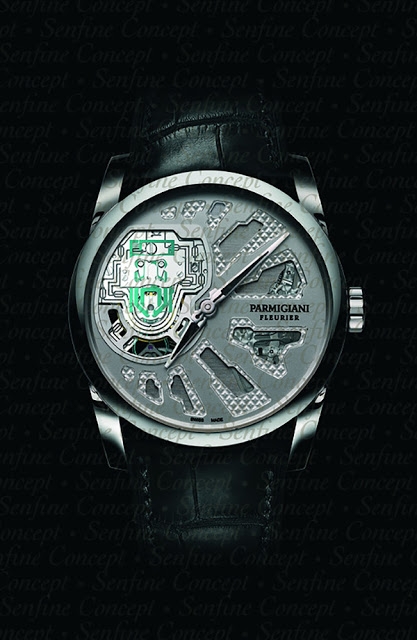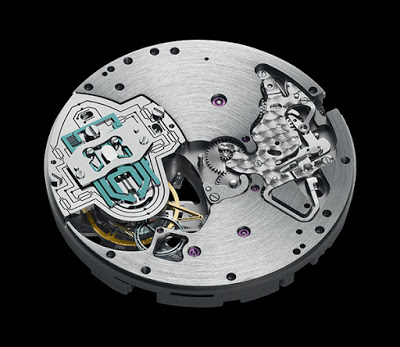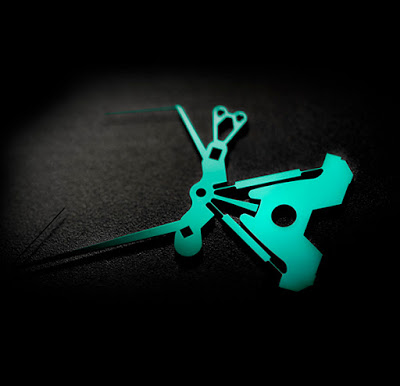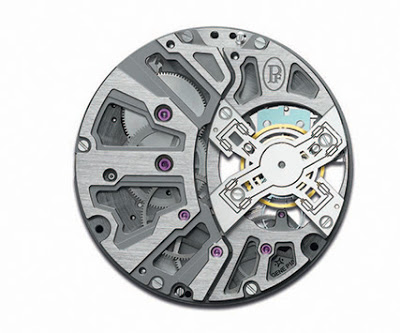Inside Parmigiani’s Revolutionary Senfine Movement
Imagine a power reserve that never ran out; a mechanical watch that ran forever. Imagine a timepiece that needed winding a few times a year, rather than several times a week; whose autonomy was calculated in months rather than hours. And finally, imagine a revolution that shattered watchmaking taboos and permanently changed an order of magnitude that seemed inviolable.
You should now have a hint of Parmigiani Fleurier’s latest project, launched on the eve of its 20-year anniversary, the SENFINE.
With a name meaning “eternally” in Esperanto, this movement is powered by a conventional energy source but has a regulating organ that offers unprecedented autonomy. The project is still in the development stage, and Parmigiani Fleurier has now opened up its research department to reveal the extraordinary story of the Senfine and the steps leading towards the launch of a revolution.
Toward A High Power Reserve
The race to achieve an extraordinary power reserve is not new in watchmaking, however, it has been quite monotonous until today. It has focused solely on increasing the supply – that is, the size or number of barrels – in the same way that a car’s range can be doubled by doubling the size of its fuel tank.
The second half of the equation, namely the movement’s energy use, has thus far remained fruitless, since the consumption of the traditional mechanical regulator is incompressible. Friction – the main factor in energy consumption – primarily affects the oscillator, which loses energy with each vibration; it then affects the escapement, at each of its interactions with the balance; and finally, the pallet fork, as it engages and disengages with the escapement wheel, generating a loss with each contact.
The second factor in energy consumption is the impacts that are a normal part of the escapement’s operation. The interaction of the pallet fork, escapement wheel and balance produces inevitable impacts, which take a heavy toll on the power reserve.
It is impossible to reduce the friction and impacts on a classic mechanical regulator. Impossible, that is, without a complete redesign and a brand new conception of a watch’s regulating organ, in which the unshakeable fundamentals of watchmaking are overturned.
The invention at the heart of the Senfine serves to eliminate all the energy-consuming factors inherent in a classic regulator, replacing them with a system of flexible, frictionless joints. The design does not involve changes to any of the motor components; the watch’s barrel – equivalent to the fuel tank of a car – remains the same. Instead, it addresses the movement’s energy consumption factors – the second part of the delicate equation, which, until now, has seemed inalterable.
Invention And Origins Of The Project
The idea and basis for the invention at the heart of the Senfine came from Pierre Genequand, a Genevese engineer and former employee at CSEM (Swiss Center for Electronics and Microtechnology). This brilliant scientist specialized in spatial engineering technology using the frictionless properties of flexible joints. Having worked in this field for several years, by the end of his career, Pierre Genequand was convinced that this technology offered strong potential for the watchmaking sector.
After retiring in 2004, he dedicated his time to developing this idea. The first stage was a 20:1 scale wooden model, which he built in a corner of his kitchen using spools of thread and makeshift counterweights. He presented this creation to his former employer, who began the search for a manufacture capable of bringing the concept to life.
Paradoxically, what gave Pierre Genequand his edge – aside from his scientific genius – was that he never worked as a watchmaker. Within the industry, an almost sacred aura surrounds the classic regulator, a type of taboo instilled in watchmakers with regard to any change in its parameters. Freed from these conventions thanks simply to his ignorance of them, Pierre Genequand addressed the issue from the reverse angle, applying aerospace technology to the world of watchmaking with no regard for the sacrosanct structures it was set to dismantle. However, his idea would have remained a mere concept were it not for the involvement of a watch manufacture.
Parmigiani Fleurier responded to the call from CSEM via its watch movement division, Vaucher Manufacture Fleurier, appreciating the immense potential of this invention and confident in its ability to bring it to life in the form of a watch.
On the eve of SIHH 2016, we reveal the progress of this spectacular project, as well as the hugely significant convergence of science and watchmaking that results from it.
Principles Of The Concept – Senfine Movement
Below are the fundamental principles of Pierre Genequand’s invention which have been transposed into a watch regulator to provide a power reserve of several weeks:
- The use of flexible guides and structures with negligible friction derived from aerospace technology for all of the regulator’s components
- The exclusive use of silicon, machined to micron level for each component, offering excellent mechanical properties thanks to its elasticity, durability and low density and friction coefficient.
- A monolithic oscillator, which provides all the functions of the balance, balance-spring and pallet fork, to which it is connected via a common attachment
- A constant contact grasshopper type escapement wheel.
The Senfine Oscillator
The Senfine regulator is made from guides with flexible structures, and oscillates at an amplitude of 16 degrees. This amplitude limitation is the basis of the invention, since it enables minimal dissipation of energy caused by friction. It is in stark contrast to the 300 degrees of rotation of the balance on a classic regulator.
The pallet fork on the Senfine oscillator is connected to the balance via a common attachment. This balance is a circular component, in the center of which two flexible blades cross without touching. During oscillation, these blades function as a return spring, thus replacing the balance-spring on a traditional balance.
The monolithic nature of this silicon structure, which brings together the balance, balance-spring and pallet fork means there are none of the pivots or rotating arbors found on a classic regulator. The Senfine regulator is suspended, oscillating on its virtual axis, under the movement of the pallet fork, with no points of friction and with a negligible friction coefficient.
The Grasshopper Escapement
In classic watchmaking, the escapement supplies the movement energy, from the barrel to the oscillator. It is the key component in maintaining and counting the oscillations of the regulating organ. The Senfine movement contains an escapement adapted to the specific characteristics of the system: the constant contact grasshopper escapement.
In this design, the two flexible blades on the pallet fork interact with the escapement, storing and discharging their elastic deformation energy as they engage and disengage with the wheel. Interference from friction is reduced and the escapement’s energy consumption matches that of the Senfine oscillator.
2008 to 2014
The six years of research that led to the development of the Senfine were probably the most difficult. The Parmigiani Fleurier manufacture began by familiarizing itself with the invention, learning the terms, examining each detail and understanding the underlying physical theory. The watchmakers immersed themselves in the aerospace world and, once prepared, led the project, step by step, towards tangible reality in the form of a watch head, with all the miniaturization and assembly challenges this demanded.
They notified the scientists of the constraints of the watchmaking world, highlighting in particular any instances where they could go against the theory. For example, at the very start of the project, the CSEM engineers were delighted that their prototype could withstand acceleration of 20G (equivalent to that of a rocket on take-off). Under normal wearing conditions, a wristwatch is subject to acceleration of between 500 and 5000G ñ an order of magnitude never anticipated during modeling at CSEM. The challenges thrown up by this lively dialogue were resolved one by one, delicately bridging the gap between theory and practice as the Senfine was brought to life.
In 2014, the Parmigiani Fleurier watchmaking center unveiled its full scale prototype of this regulator. When associated with a conventional caliber, it offered a power reserve of 45 days – and that was only the start of its potential. The final power reserve, once development is complete, will be much greater.
2015
In terms of research and development, the focus in 2015 was on reducing the Senfine’s sensitivity to impacts. Given its very low running amplitude (16 degrees) and the fact that it is suspended, with no physical contact, the operation of the regulator was significantly affected by the slightest impact.
This work began with an empirical characterization of all the impact factors. Very often, the theory predicted that the system would withstand impacts, which was confirmed by simulations, but in practice, this was not the case. There is a world of difference between virtual or simulated wearing and real-life wearing.
By characterizing each impact and stoppage factor, the engineers found solutions which involved damping and discharging the impact for each stoppage factor. To further reinforce this victory, the watchmakers decided to supply the movement with a frequency of 16 Hertz, or 115,200 vibrations per hour. The effect of this spectacular frequency is to reduce the effect of the impacts on the regulator and guarantee stable operation.
2015 was also dedicated to the escapement adjustment procedure. In a classic movement, adjustment is a formality, as it is a completely separate and independent structure. In the Senfine, the escapement is in constant contact with the pallet fork, which is integral with the oscillator in a monolithic structure. To adjust the escapement, a device had to be invented to bring together the calibration functions for all the regulator components in a single part. This development is now complete, and in production.
2016
The focus for 2016 will be on thermal considerations. This will involve ensuring the Senfine’s compliance with the COSC standard, which stipulates constant isochronism for any temperature inside the movement between 8 and 38 degrees. Silicon reacts to temperature variations in a complex way. A theoretical solution has already been validated and will soon be applied.
The production process and tools for the Senfine project will also be defined in 2016. In addition to the Senfine system itself, the watchmaker/constructors are in the process of creating the entire product environment. The adjustment devices need to be invented, and the measuring tools do not yet exist.
For example, how will the Senfine’s operation be evaluated, given that it does not tick? This is a whole new avenue to be explored. However, the challenge is perfectly in keeping with the thrill of the adventure and, in particular, the revolution to come. Once these issues are resolved, and once the external parameters have been defined, the Parmigiani manufacture will define the Senfineís power reserve and its potential. It will be counted in months, and will transform the face of mechanical watchmaking forever.
The Parmigiani watchmaking center looks forward to seeing you in a year’s time for another update on this great adventure.





